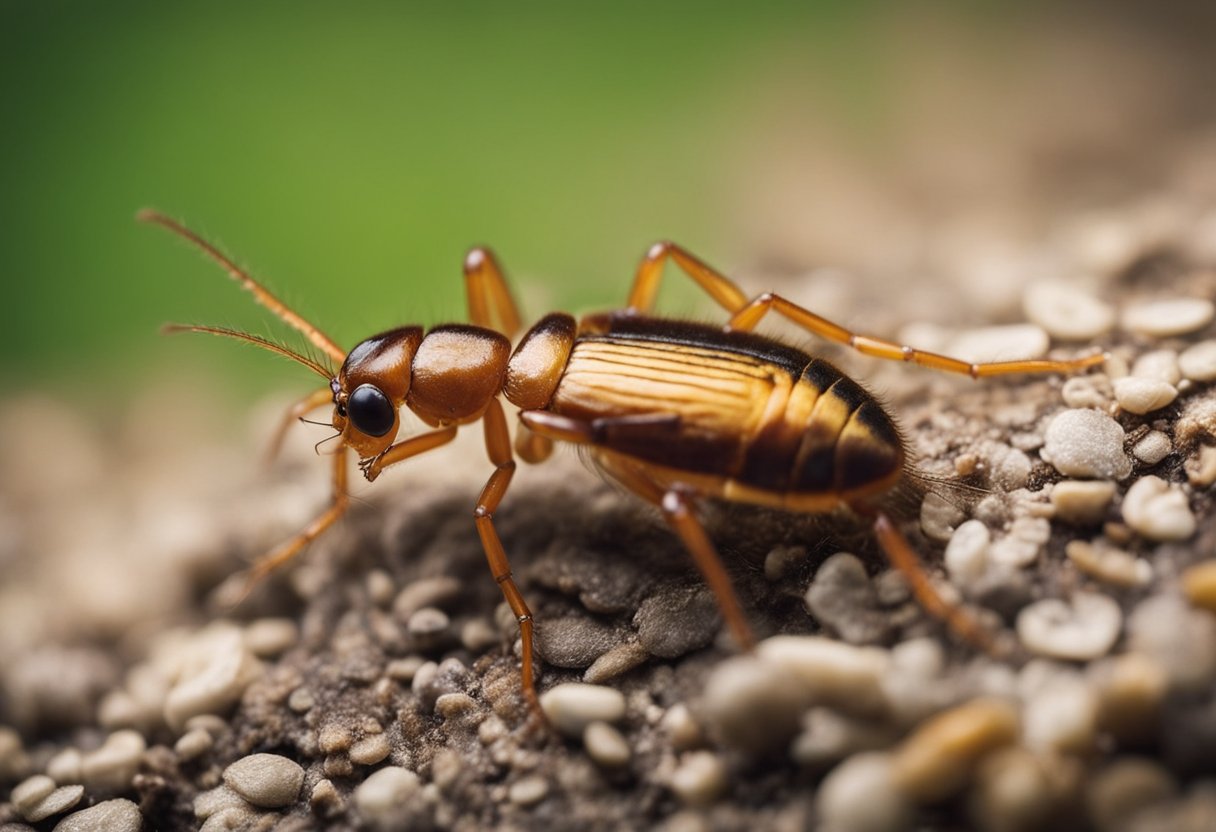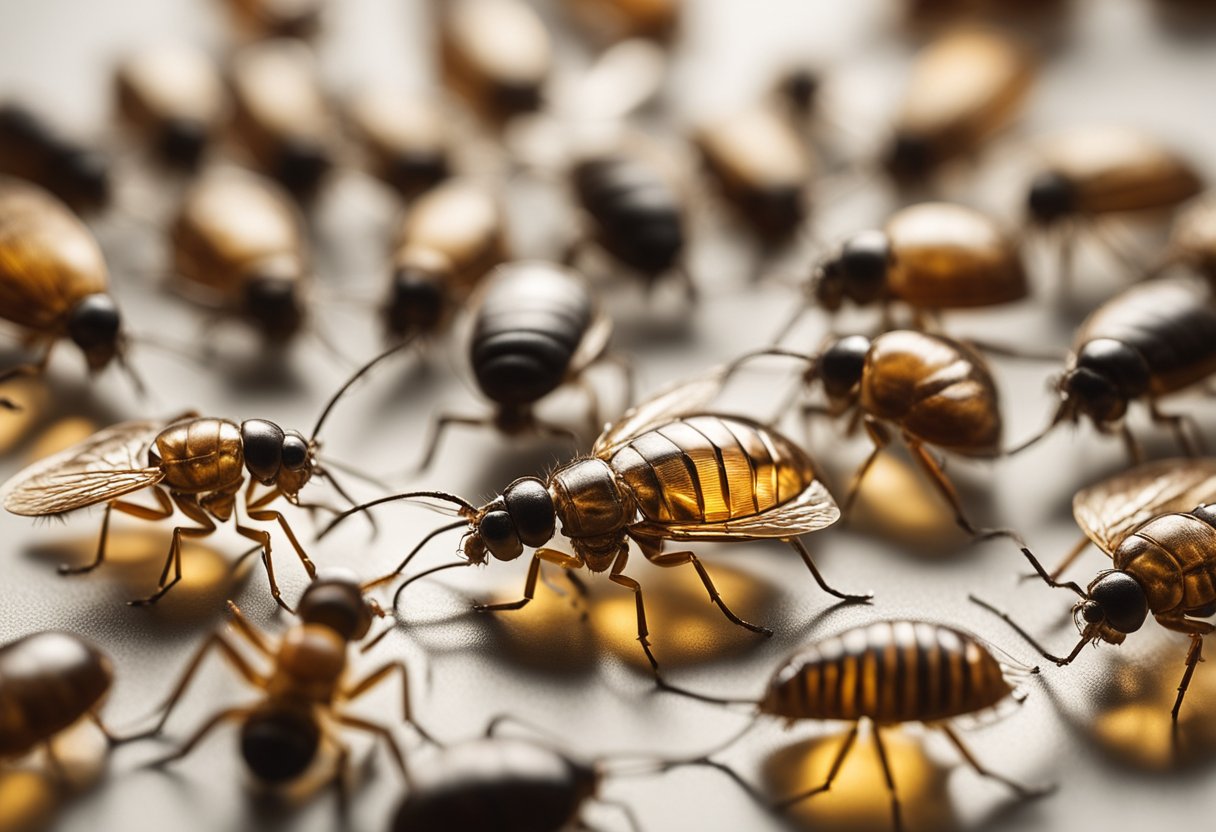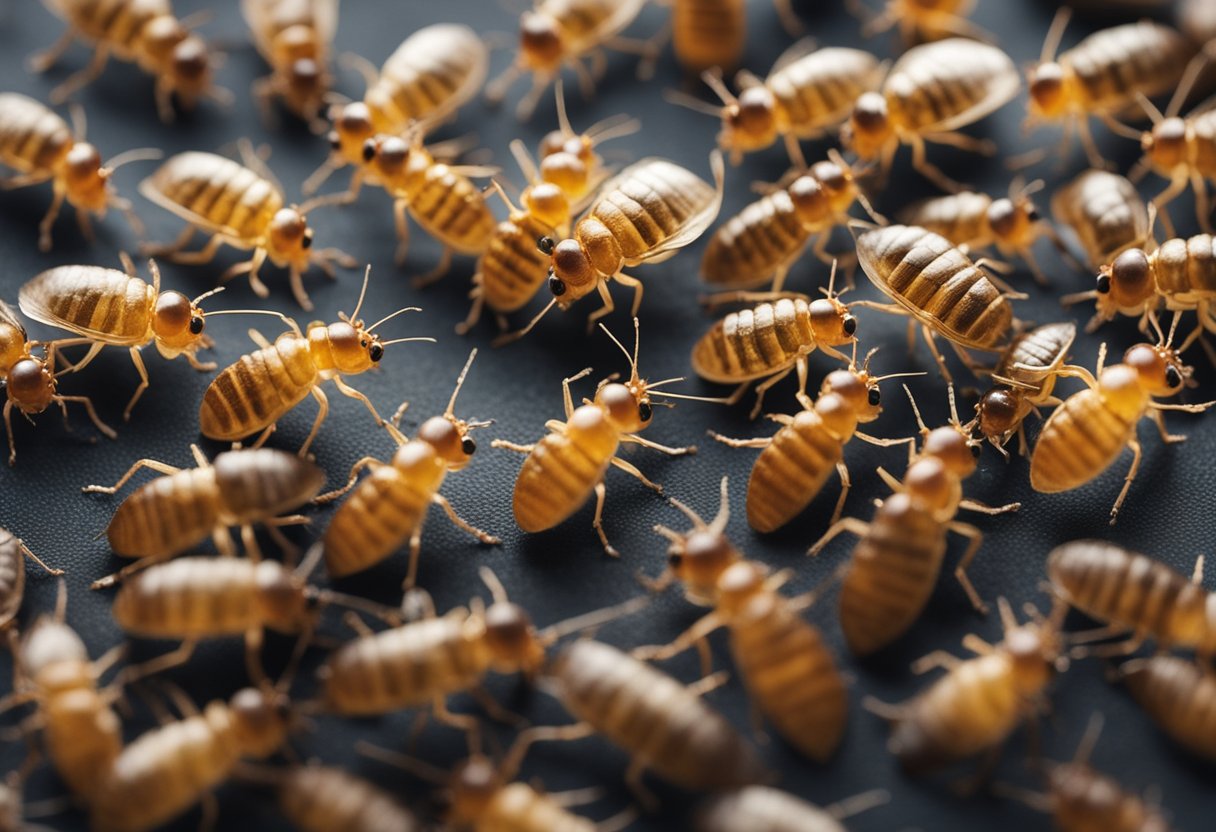Fleas are more than just a nuisance—these tiny, wingless insects can pose serious health risks to both pets and humans. As parasites, they feed on the blood of their hosts, and in doing so, can transmit a variety of illnesses. While fleas prefer non-human hosts, they can and do bite humans, potentially becoming vectors for diseases. It’s important to be aware of the health implications these pests carry, as understanding the risks can help you take appropriate actions to protect yourself and your pets.

Some of the health risks associated with flea bites in humans include the transmission of flea-borne typhus, caused by the bacterium Rickettsia typhi, and the plague, which is most often associated with the bites of infected rodent fleas. The symptoms of these diseases can range from mild to severe, including high fevers, headaches, and rashes. Additionally, fleas can act as a catalyst for allergic reactions, with their saliva causing dermatitis that presents as itchy bumps or rashes on the skin.
Understanding Fleas and Their Life Cycle
In tackling the health risks posed by fleas, it’s essential that you understand the distinct characteristics of fleas and the steps of their life cycle, from eggs to adult fleas.
Characteristics of Fleas
Fleas are small, flightless insects that belong to the order Siphonaptera. As external parasites, they live by consuming the blood of their hosts. One key fact you should know is that fleas thrive particularly well in warm weather, which accelerates their life cycle. Adult fleas are usually less than an eighth of an inch long, making them barely visible to the naked eye. They have a laterally compressed body, which enables them to move effortlessly through the fur of their host. Moreover, fleas are known for their long hind legs, which allow them to jump extraordinary distances relative to their size.
Reproduction and Development
The life cycle of fleas encompasses four stages: eggs, larvae, pupae, and adults.
- Eggs: Once an adult female flea has had a blood meal, she can lay up to 50 eggs per day. Given the right conditions—especially warmth and humidity—these eggs will hatch within a few days.
- Larvae: Emerging from the eggs are tiny, worm-like larvae. These larvae feed on organic debris found in their environment, including the feces of adult fleas, which contain undigested blood. The larvae stage lasts several days to weeks before they spin cocoons.
- Pupae: The cocoon, which houses the pupae, serves as a protective layer from which the adult flea will eventually emerge. The pupae stage can last several days, weeks, or even months. Fleas can remain dormant in the cocoon until they sense a potential host nearby through warmth and vibrations.
- Adult Fleas: Once they’ve sensed a host, adult fleas emerge from the cocoon and immediately seek a blood meal. Adult fleas must feed on blood in order to reproduce. After feeding and mating, the life cycle continues as females lay eggs.
Common Diseases Transmitted by Fleas
Fleas can transmit a range of diseases to both humans and pets. Your awareness of these infections can help in prevention and early treatment.
Bubonic Plague
The bubonic plague, caused by the bacterium Yersinia pestis, is notorious for historical pandemics. The disease is transmitted to you through the bite of an infected flea, often originating from rodents like rats.
Murine Typhus
Murine typhus is a disease you can contract from the bacteria Rickettsia typhi, typically carried by fleas on rats. If an infected flea bites you, it can lead to symptoms like fever, headache, and rash.
Tapeworm Infections
Fleas can transmit tapeworms to both you and your pets. When your pet ingests an infected flea during grooming, it can become a host to tapeworms. Humans can also become accidental hosts in similar ways.
Cat Scratch Disease
Carried by fleas and transmitted to you through the scratch or bite of an infected cat, cat scratch disease is caused by the bacteria Bartonella henselae. It’s characterized by swollen lymph nodes near the bite or scratch site.
Tularemia
Tularemia, also known as rabbit fever, can be transmitted to you through the bite of an infected flea. It’s caused by the bacterium Francisella tularensis and can result in a range of symptoms from skin ulcers to pneumonia.
Symptoms and Health Complications
Fleas are not just a nuisance; their bites can lead to a range of symptoms and health complications in both pets and humans. It is essential to recognize these signs and understand the potential risks to manage and prevent the spread of flea-borne diseases effectively.
Allergic Reactions to Flea Bites
When fleas bite you or your pets, they inject saliva into the skin, which may lead to allergic reactions. Common symptoms include:
- Itchiness: A strong, persistent urge to scratch the bite area.
- Rash: Red bumps may develop, often around the ankles or legs.
Potential for Serious Illness
In some cases, fleas can transmit pathogens that cause serious illnesses such as:
- Flea-borne (murine) typhus: Symptoms can extend from fever and headache to chills and fatigue.
- Plague: Symptoms include high fever, swollen lymph nodes, and possibly respiratory issues.
- Cat scratch disease: Typically presents with fever, headache, and swollen lymph nodes.
Problems in Pets and Humans
Flea infestations can lead to health problems in pets, which may include:
- Anemia: Especially in young or small pets, severe flea infestations can cause a noticeable drop in energy levels.
- Allergy: Pets can develop flea allergy dermatitis, leading to excessive itching and secondary infections.
Humans can experience a range of symptoms due to flea bites or flea-borne diseases, from minor itchiness and irritation to more severe conditions requiring medical attention.
Prevention and Control Strategies

Effective flea management requires a multi-faceted approach involving environmental control, pet treatment options, and personal protection measures. By tackling the problem on all fronts, you can significantly reduce the risk of flea infestations and the associated health risks.
Environmental Control
To manage fleas in your environment, focus on thorough vacuuming of carpets, furniture, and areas where your pets spend time. Regularly clean and launder bedding and pet beds to kill fleas and eggs. Employ proper waste disposal, ensuring vacuum bags are sealed and discarded outside your home to prevent fleas from returning.
- Vacuuming: Target carpets, upholstery, and pet areas frequently
- Wash Bedding: Hot water is best for killing fleas on bedding and soft furnishings
Pet Treatment Options
For your pets, consistent grooming and the use of flea control products are key. Consult your veterinarian about collars, topical treatments, and oral medication to keep fleas at bay. Follow the recommended schedule for treatments to maintain their effectiveness over time.
- Flea Collars: Can provide long-term flea prevention
- Oral Medications: Consult your vet for options that suit your pet
- Topical Treatments: Apply as directed for continued flea control
Personal Protection Measures
Protect yourself by wearing long-sleeve clothing and using insect repellent when in high-risk areas. Protect your feet and lower legs by tucking pants into socks or using flea repellent products designed for personal use.
- Clothing Choices: Long sleeves and pants decrease skin exposure
- Use of Repellents: Select EPA-approved products for personal flea prevention
Treatment Methods for Flea-Related Diseases

When fleas infest pets or humans, they can transmit diseases that require specific treatment methods. It’s essential to act swiftly to mitigate health risks and ensure proper care.
Medical Care for Pets
Your veterinarian is the first line of defense in treating flea-related diseases in pets. They may prescribe antibiotics to tackle bacterial infections caused by flea bites, such as Rickettsia typhi, which leads to flea-borne typhus. Conditions like ehrlichiosis, babesiosis, and anaplasmosis are also treatable with specific antibiotics under a veterinarian’s supervision.
- Tapeworms: Pets can contract tapeworms through flea ingestion, which requires oral or injectable medicine to eliminate.
- Preventative Measures: Regular flea control treatments recommended by your vet can prevent future infestations and related diseases.
Human Treatments and Medications
When humans are affected by diseases transmitted by fleas, it is critical to consult a healthcare provider. Antibiotics serve as a cornerstone for treating conditions such as Rocky Mountain spotted fever and typhus.
- Over-the-counter (OTC) Treatment: Anti-itch creams and antihistamines can alleviate symptoms of flea bites like discomfort and itchiness.
- Severe Viral Conditions: Diseases like Powassan virus may require hospitalization and supportive care, as there is no specific treatment for the virus itself.
Environmental Impact of Fleas

Fleas are more than just a nuisance; they represent a significant environmental challenge. Their lifecycle and behavior can have detrimental effects on both wildlife and public health.
Effects on Wildlife
Fleas infest a wide range of animals, including birds, mammals, and occasionally reptiles. In ecosystems, their presence can indicate a healthy diversity of hosts, but when flea populations become disproportionately large, the impact on wildlife can be harmful.
- Birds: Flea infestations can lead to anemia, decreased reproductive success, and even death in nestlings.
- Mammals: Larger animals typically tolerate fleas, but when populations explode, the health of these hosts can decline, leading to more broadly felt environmental repercussions.
Challenges for Public Health
Fleas are vectors for various pathogens, capable of transferring diseases between animals and humans. Flea control efforts often require the use of chemical treatments, which can have their own environmental implications.
- Water: Chemical residues from flea treatments have been found in water sources, potentially affecting aquatic life and ecosystems.
- Infestations: High flea populations in urban settings can lead to public health concerns, such as flea-borne diseases, and necessitate large-scale pest control measures, which can inadvertently affect beneficial insect populations and environmental quality.

